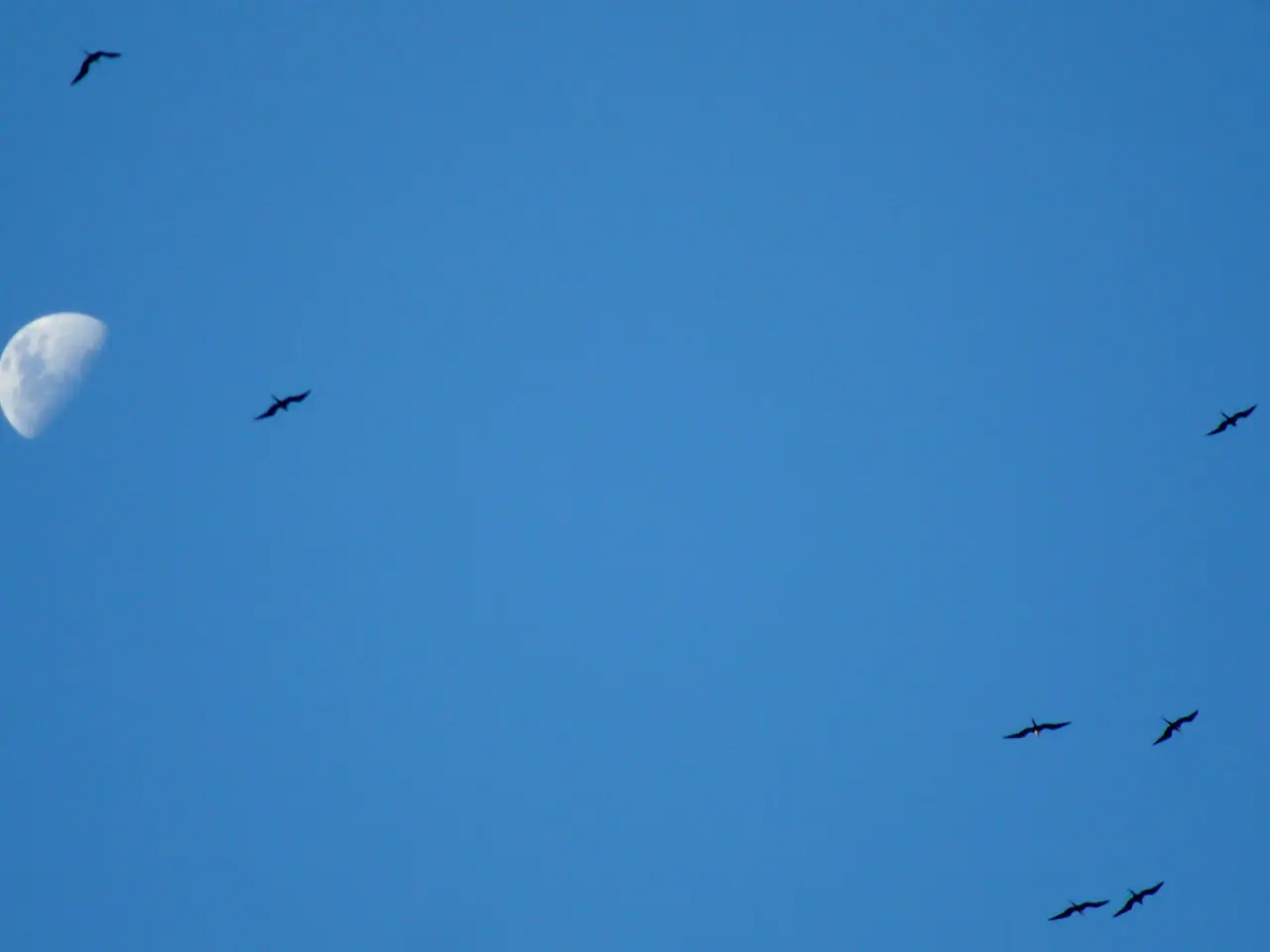The 2025 Sturgeon Moon is predicted to illuminate Turkish skies in a captivating two-night display, accompanied by a parade of celestial bodies.
The Sturgeon Moon, set to grace our skies on August 9, 2025, is more than just a full moon. It marks the last full Moon of summer, a significant astronomical event that offers a visual spectacle and carries spiritual symbolism.
This celestial body will rise in the southeastern horizon around 9 p.m. local time, appearing unusually large due to the Moon illusion, an optical effect that makes the Moon look larger when it is low on the horizon. The Moon will set after sunrise, moving across the southern sky before disappearing in the southwest.
The Sturgeon Moon is named after the seasonal abundance of sturgeon fish in North America's Great Lakes, and it carries spiritual symbolism around strength, resilience, emotional release, and creative insights. The Moon’s appearance and timing marking the move toward harvest season evokes ideas of completion and letting go, just as the sturgeon fish rise from the deep.
Astronomically, the Sturgeon Moon is special for several reasons. It is August’s full Moon, and it will offer nearly identical views on two consecutive nights, August 8 and 9, due to a smaller difference in rise times than usual. The Moon's path will take it close to several celestial bodies, including Saturn, the Pleiades star cluster, and Uranus, providing a planetary alignment sequence in August 2025.
On Aug. 11-13, the Sturgeon Moon will appear close to Saturn, first to the right of the planet and then to the left. Between Aug. 15 and 17, the Moon will pass the Pleiades star cluster and the planet Uranus. On Aug. 20, the moon will form a triangle with Venus and Jupiter before appearing just above Mercury on Aug. 21.
Lunar rays, bright streaks formed by material ejected from ancient impacts, are most visible during a full moon and can be observed during the Sturgeon Moon. Observers in Europe, North America, and Asia will have viewing opportunities both the night before and the night after peak illumination.
The Sturgeon Moon will be visible in Türkiye on both August 8 and 9, 2025, with optimal viewing conditions along the Aegean and Mediterranean coasts, as well as in rural inland areas with minimal light pollution. Atmospheric scattering during moonrise can cause the lunar disk to appear yellow or orange during the Sturgeon Moon.
Globally, the moon will reach peak illumination on Aug. 9 at 3:55 a.m. Eastern Time (7:55 a.m. GMT). In Istanbul, the Sturgeon Moon will rise at 8:02 p.m. on Friday and 8:31 p.m. on Saturday.
In conclusion, the Sturgeon Moon of 2025 is a celestial event not to be missed. It offers a unique opportunity to witness the Moon illusion, a planetary alignment, and lunar rays, while carrying spiritual symbolism that ties in with the changing seasons. So, mark your calendars and prepare for a night under the stars to remember!
- The Sturgeon Moon, a significant astronomical event, will be visible in Türkiye on both August 8 and 9, 2025, especially along the Aegean and Mediterranean coasts and rural inland areas with minimal light pollution.
- In Ankara, the capital city of Türkiye, the Sturgeon Moon will rise on Friday, August 9, at a local time of 8:31 p.m., offering an opportunity to watch this celestial spectacle.
- The Turkey-based researchers at the Turkish Academy of Sciences' Institute of Environmental Science, specializing in environmental-science and space-and-astronomy, encourage individuals to observe and study the Sturgeon Moon for its scientific and cultural significance.
- As the Sturgeon Moon ascends, its lunar rays will be visible to those in Turkey, Europe, North America, and Asia. The atmospheric scattering during moonrise could result in the lunar disk appearing yellow or orange during the Sturgeon Moon.








